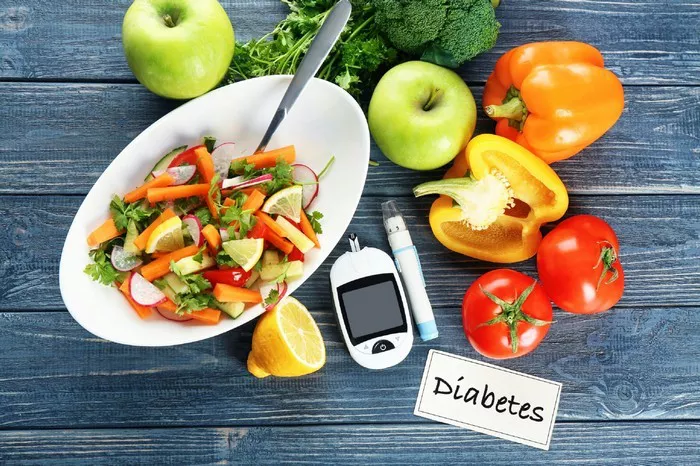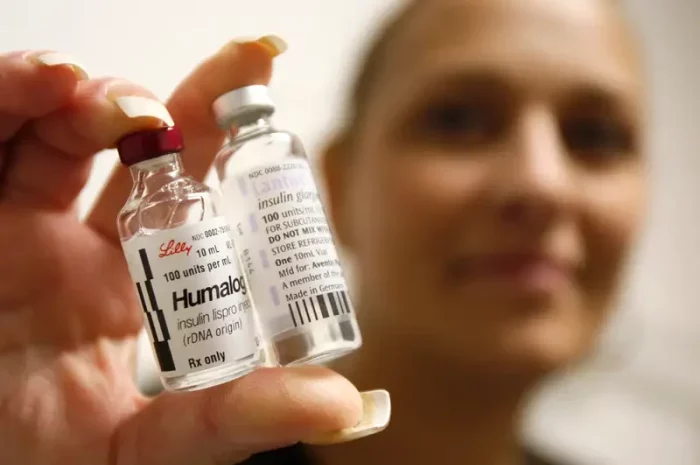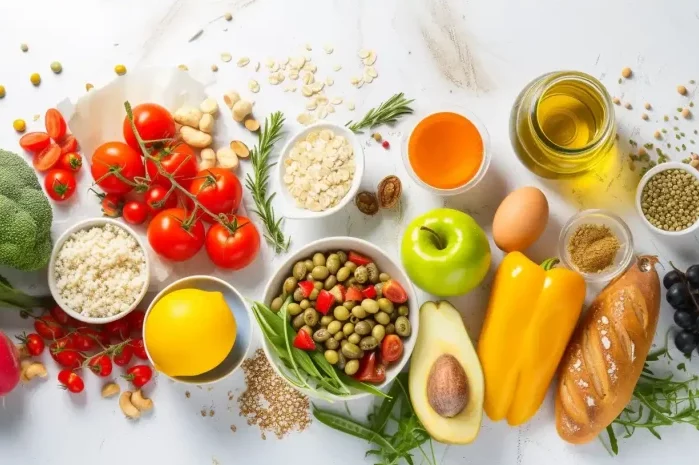Blood sugar regulation is critical for overall health, particularly for individuals with diabetes or those at risk of developing it. High blood sugar levels, if left uncontrolled, can lead to serious complications such as heart disease, kidney damage, nerve disorders, and vision problems. While medication and physical activity play crucial roles in managing blood glucose, diet remains the foundation of effective blood sugar control.
Certain foods have been scientifically proven to help lower blood sugar levels naturally. These foods work in various ways, such as improving insulin sensitivity, slowing carbohydrate absorption, reducing inflammation, and enhancing metabolic function. This article will explore the best blood sugar-lowering foods and explain how they contribute to optimal glycemic control.
The Science Behind Blood Sugar Regulation
Before diving into specific foods, it’s essential to understand how blood sugar is regulated in the body. Blood glucose levels are primarily controlled by insulin, a hormone produced by the pancreas. Insulin helps cells absorb glucose from the bloodstream to use for energy. However, in individuals with insulin resistance or type 2 diabetes, the body’s response to insulin is impaired, leading to elevated blood sugar levels.
Diet plays a pivotal role in blood sugar management because different foods impact glucose levels in unique ways. High-glycemic foods, such as refined sugars and processed carbohydrates, cause rapid spikes in blood sugar. In contrast, nutrient-dense foods with fiber, protein, and healthy fats help slow glucose absorption, reducing fluctuations and improving insulin sensitivity.
The following foods have been shown to support healthy blood sugar levels and should be included in a diabetes-friendly diet.
1. Leafy Green Vegetables: Nutrient Powerhouses for Blood Sugar Control
Leafy greens like spinach, kale, Swiss chard, and collard greens are among the most beneficial foods for lowering blood sugar. These vegetables are rich in fiber, antioxidants, and essential micronutrients such as magnesium and vitamin C, which improve insulin sensitivity.
How Leafy Greens Help Lower Blood Sugar:
-
High fiber content slows digestion and glucose absorption, preventing blood sugar spikes.
-
Magnesium plays a role in insulin function and glucose metabolism.
-
Antioxidants reduce oxidative stress and inflammation, both of which contribute to insulin resistance.
Best Ways to Consume: Add leafy greens to salads, smoothies, stir-fries, or omelets for a nutrient boost.
2. Berries: A Sweet Treat That Supports Glycemic Control
Berries, including blueberries, raspberries, strawberries, and blackberries, are excellent choices for individuals looking to stabilize blood sugar levels. Unlike other fruits that may cause rapid spikes, berries have a lower glycemic index due to their high fiber and polyphenol content.
How Berries Help Lower Blood Sugar:
-
Rich in anthocyanins, which enhance insulin sensitivity.
-
Contain fiber, which slows sugar absorption and prevents spikes.
-
Packed with antioxidants that reduce inflammation and protect against diabetes complications.
Best Ways to Consume: Enjoy berries in Greek yogurt, oatmeal, smoothies, or as a natural sweetener for desserts.
3. Nuts and Seeds: Healthy Fats for Steady Blood Sugar Levels
Nuts and seeds, such as almonds, walnuts, flaxseeds, and chia seeds, are excellent for blood sugar management. They are low in carbohydrates and rich in healthy fats, protein, and fiber, making them ideal for stabilizing glucose levels.
How Nuts and Seeds Help Lower Blood Sugar:
-
Protein and fat slow digestion, preventing rapid sugar absorption.
-
Fiber improves gut health and enhances insulin sensitivity.
-
Omega-3 fatty acids reduce inflammation and improve metabolic function.
Best Ways to Consume: Snack on a handful of mixed nuts, sprinkle seeds on salads or yogurt, or use almond butter as a spread.
4. Legumes: A Plant-Based Protein That Supports Glycemic Control
Legumes, including lentils, chickpeas, black beans, and kidney beans, are packed with fiber and protein, making them a valuable addition to a diabetes-friendly diet.
How Legumes Help Lower Blood Sugar:
-
Complex carbohydrates digest slowly, preventing sudden sugar spikes.
-
Rich in resistant starch, which feeds healthy gut bacteria and improves insulin sensitivity.
-
High protein content helps maintain steady energy levels and reduces hunger.
Best Ways to Consume: Use legumes in soups, stews, salads, or as a meat alternative in vegetarian meals.
5. Whole Grains: A Smart Carbohydrate Choice for Blood Sugar Management
Whole grains like quinoa, barley, brown rice, and whole wheat are superior to refined grains because they retain their fiber and nutrient content.
How Whole Grains Help Lower Blood Sugar:
-
Contain complex carbohydrates that digest slowly, preventing sugar spikes.
-
Rich in magnesium, which supports insulin function.
-
Improve gut health and enhance metabolic efficiency.
Best Ways to Consume: Swap white rice for quinoa or barley, choose whole-grain bread, and add oats to breakfast meals.
6. Fatty Fish: Omega-3s for Better Insulin Sensitivity
Fatty fish such as salmon, mackerel, sardines, and trout are excellent sources of omega-3 fatty acids, which provide anti-inflammatory benefits and support heart health.
How Fatty Fish Helps Lower Blood Sugar:
-
Omega-3s reduce inflammation, which is linked to insulin resistance.
-
Provides high-quality protein that stabilizes blood sugar.
-
Supports cardiovascular health, a major concern for people with diabetes.
Best Ways to Consume: Grill or bake fish, add it to salads, or enjoy it in a healthy fish stew.
7. Apple Cider Vinegar: A Natural Blood Sugar Regulator
Apple cider vinegar (ACV) has been widely studied for its effects on blood sugar levels. It contains acetic acid, which improves insulin sensitivity and reduces post-meal blood sugar spikes.
How Apple Cider Vinegar Helps Lower Blood Sugar:
-
Slows the breakdown of carbohydrates into sugar.
-
Enhances insulin function.
-
Lowers fasting blood glucose levels.
Best Ways to Consume: Mix one tablespoon of ACV in water before meals or use it as a salad dressing.
8. Garlic and Onions: Natural Compounds for Blood Sugar Balance
Garlic and onions contain sulfur compounds and antioxidants that have been shown to improve insulin function and reduce inflammation.
How Garlic and Onions Help Lower Blood Sugar:
-
Increase insulin secretion.
-
Reduce oxidative stress and inflammation.
-
Support heart health by lowering cholesterol and blood pressure.
Best Ways to Consume: Use garlic and onions in soups, stews, stir-fries, and roasted dishes.
9. Cinnamon: A Spice That Mimics Insulin Action
Cinnamon has been extensively studied for its ability to lower blood sugar levels. It contains bioactive compounds that improve insulin sensitivity and reduce blood sugar spikes.
How Cinnamon Helps Lower Blood Sugar:
-
Slows the breakdown of carbohydrates.
-
Enhances insulin efficiency.
-
Reduces fasting blood sugar levels.
Best Ways to Consume: Add cinnamon to oatmeal, coffee, tea, or smoothies.
10. Greek Yogurt: A Probiotic-Rich Food for Insulin Sensitivity
Greek yogurt is an excellent source of protein and probiotics, both of which play key roles in blood sugar regulation.
How Greek Yogurt Helps Lower Blood Sugar:
-
High protein content stabilizes blood sugar.
-
Probiotics improve gut health and insulin sensitivity.
-
Lower in carbohydrates compared to regular yogurt.
Best Ways to Consume: Enjoy Greek yogurt with berries, nuts, or cinnamon for a nutrient-dense snack.
Final Thoughts: A Balanced Diet for Long-Term Blood Sugar Control
Incorporating blood sugar-lowering foods into your diet can significantly improve glycemic control and overall health. A well-balanced diet that includes fiber-rich vegetables, lean proteins, healthy fats, and complex carbohydrates can help maintain steady blood glucose levels and reduce the risk of diabetes complications.
Beyond diet, lifestyle modifications such as regular physical activity, proper hydration, and stress management also play essential roles in long-term blood sugar regulation. By making informed food choices and adopting a healthy lifestyle, individuals with diabetes can improve their well-being and reduce their dependence on medication.
With the right nutrition and consistent habits, maintaining stable blood sugar levels is an achievable goal that leads to a healthier and more active life.
Related topics:
What to Stop Eating if You Are Prediabetic























